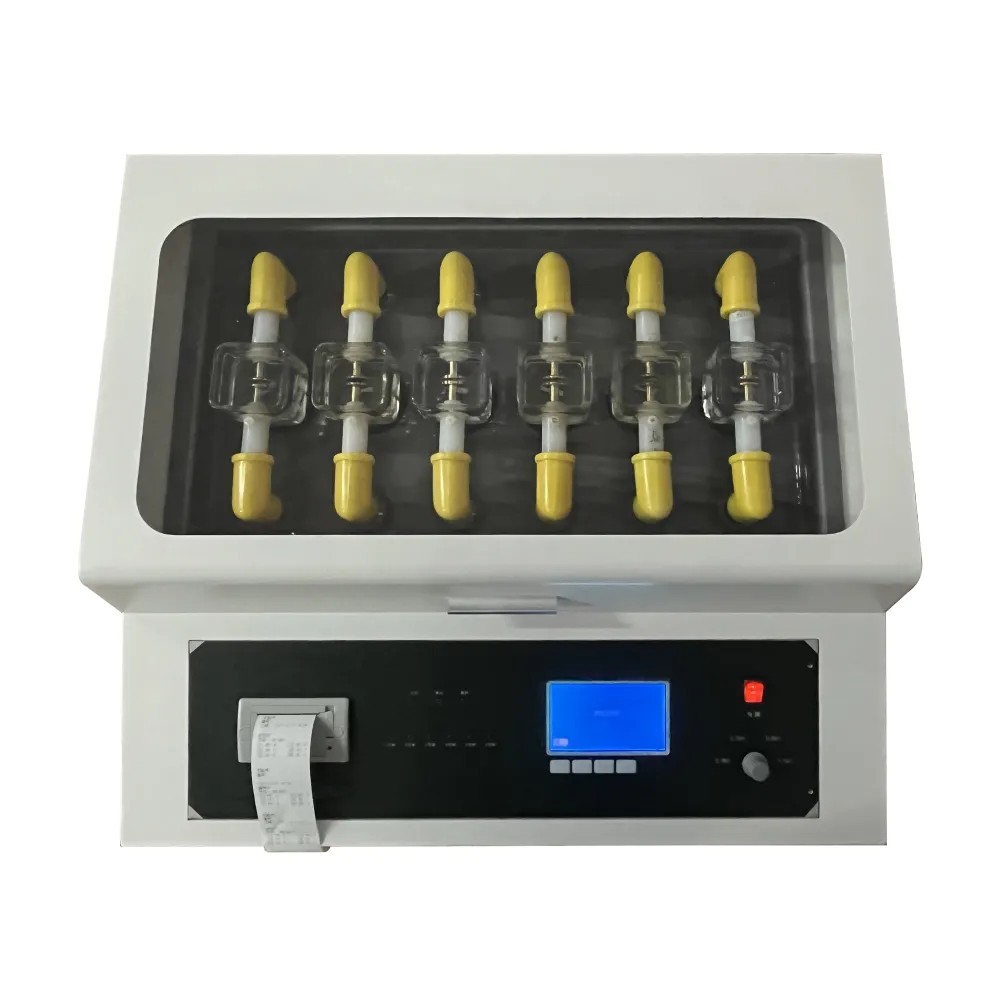TEL:
+86-0312-3189593
 English
English

Telephone:0312-3189593

Email:sales@oil-tester.com

-
 Afrikaans
Afrikaans -
 Albanian
Albanian -
 Amharic
Amharic -
 Arabic
Arabic -
 Armenian
Armenian -
 Azerbaijani
Azerbaijani -
 Basque
Basque -
 Belarusian
Belarusian -
 Bengali
Bengali -
 Bosnian
Bosnian -
 Bulgarian
Bulgarian -
 Catalan
Catalan -
 Cebuano
Cebuano -
 China
China -
 China (Taiwan)
China (Taiwan) -
 Corsican
Corsican -
 Croatian
Croatian -
 Czech
Czech -
 Danish
Danish -
 Dutch
Dutch -
 English
English -
 Esperanto
Esperanto -
 Estonian
Estonian -
 Finnish
Finnish -
 French
French -
 Frisian
Frisian -
 Galician
Galician -
 Georgian
Georgian -
 German
German -
 Greek
Greek -
 Gujarati
Gujarati -
 Haitian Creole
Haitian Creole -
 hausa
hausa -
 hawaiian
hawaiian -
 Hebrew
Hebrew -
 Hindi
Hindi -
 Miao
Miao -
 Hungarian
Hungarian -
 Icelandic
Icelandic -
 igbo
igbo -
 Indonesian
Indonesian -
 irish
irish -
 Italian
Italian -
 Japanese
Japanese -
 Javanese
Javanese -
 Kannada
Kannada -
 kazakh
kazakh -
 Khmer
Khmer -
 Rwandese
Rwandese -
 Korean
Korean -
 Kurdish
Kurdish -
 Kyrgyz
Kyrgyz -
 Lao
Lao -
 Latin
Latin -
 Latvian
Latvian -
 Lithuanian
Lithuanian -
 Luxembourgish
Luxembourgish -
 Macedonian
Macedonian -
 Malgashi
Malgashi -
 Malay
Malay -
 Malayalam
Malayalam -
 Maltese
Maltese -
 Maori
Maori -
 Marathi
Marathi -
 Mongolian
Mongolian -
 Myanmar
Myanmar -
 Nepali
Nepali -
 Norwegian
Norwegian -
 Norwegian
Norwegian -
 Occitan
Occitan -
 Pashto
Pashto -
 Persian
Persian -
 Polish
Polish -
 Portuguese
Portuguese -
 Punjabi
Punjabi -
 Romanian
Romanian -
 Russian
Russian -
 Samoan
Samoan -
 Scottish Gaelic
Scottish Gaelic -
 Serbian
Serbian -
 Sesotho
Sesotho -
 Shona
Shona -
 Sindhi
Sindhi -
 Sinhala
Sinhala -
 Slovak
Slovak -
 Slovenian
Slovenian -
 Somali
Somali -
 Spanish
Spanish -
 Sundanese
Sundanese -
 Swahili
Swahili -
 Swedish
Swedish -
 Tagalog
Tagalog -
 Tajik
Tajik -
 Tamil
Tamil -
 Tatar
Tatar -
 Telugu
Telugu -
 Thai
Thai -
 Turkish
Turkish -
 Turkmen
Turkmen -
 Ukrainian
Ukrainian -
 Urdu
Urdu -
 Uighur
Uighur -
 Uzbek
Uzbek -
 Vietnamese
Vietnamese -
 Welsh
Welsh -
 Bantu
Bantu -
 Yiddish
Yiddish -
 Yoruba
Yoruba -
 Zulu
Zulu
មករា . 20, 2025 11:29
Back to list
gas chromatography for gas analysis
Gas chromatography phases play a crucial role in defining the separation effectiveness and accuracy in chemical analysis and product development. Through the lens of experience, expertise, authoritativeness, and trustworthiness, we delve into the various phases of gas chromatography, highlighting their applications and best practices in diverse industries.
Another essential aspect is the temperature phase programming used during gas chromatography. Seasoned analysts often adjust temperature controls to optimize separation, a process requiring precise expertise. By gradually increasing the temperature during the analysis, professionals can achieve improved separation for complex mixtures with compounds of varying volatilities. This method has been widely documented to enhance resolution and reduce run times, critical factors for maintaining competitive edge in pharmaceutical and biochemical industries. Moreover, the mobile phase, though typically an inert gas like helium or nitrogen, requires meticulous handling and selection. Gas purity and flow rate are variables that experienced laboratory professionals must manage expertly. A simple deviation can lead to significant inaccuracies, a testament to how expertise and operational knowledge ensure consistent results and trustworthy analyses. Finally, leveraging authoritative knowledge in maintaining and calibrating gas chromatography equipment is imperative for sustaining reliable operations. Regular maintenance and calibration allow for longevity and accuracy, fortifying the trust industries place on analytical results derived from their protocols. By understanding and implementing the correct gas chromatography phases and protocols, industries can achieve optimal separation efficiencies tailored to their specific analytical requirements. In a constantly evolving scientific landscape, the shared experiences and expertise of industry leaders pave the way for innovative and authoritative approaches to gas chromatography, ensuring that their practices remain both cutting-edge and credible.


Another essential aspect is the temperature phase programming used during gas chromatography. Seasoned analysts often adjust temperature controls to optimize separation, a process requiring precise expertise. By gradually increasing the temperature during the analysis, professionals can achieve improved separation for complex mixtures with compounds of varying volatilities. This method has been widely documented to enhance resolution and reduce run times, critical factors for maintaining competitive edge in pharmaceutical and biochemical industries. Moreover, the mobile phase, though typically an inert gas like helium or nitrogen, requires meticulous handling and selection. Gas purity and flow rate are variables that experienced laboratory professionals must manage expertly. A simple deviation can lead to significant inaccuracies, a testament to how expertise and operational knowledge ensure consistent results and trustworthy analyses. Finally, leveraging authoritative knowledge in maintaining and calibrating gas chromatography equipment is imperative for sustaining reliable operations. Regular maintenance and calibration allow for longevity and accuracy, fortifying the trust industries place on analytical results derived from their protocols. By understanding and implementing the correct gas chromatography phases and protocols, industries can achieve optimal separation efficiencies tailored to their specific analytical requirements. In a constantly evolving scientific landscape, the shared experiences and expertise of industry leaders pave the way for innovative and authoritative approaches to gas chromatography, ensuring that their practices remain both cutting-edge and credible.
Previous:
Latest news
-
Testing Equipment Industry Sees Major Advancements in 2025: Smart & Precision Technologies Lead the WayNewsJun.06,2025
-
Applications of Direct Current Generators in Renewable Energy SystemsNewsJun.05,2025
-
Hipot Tester Calibration and Accuracy GuidelinesNewsJun.05,2025
-
Digital Circuit Breaker Analyzer Features and BenefitsNewsJun.05,2025
-
Benefits of Real-Time Power Quality Monitoring Devices for Industrial EfficiencyNewsJun.05,2025
-
Earth Fault Loop Testing in High-Rise Building Electrical SystemsNewsJun.05,2025



